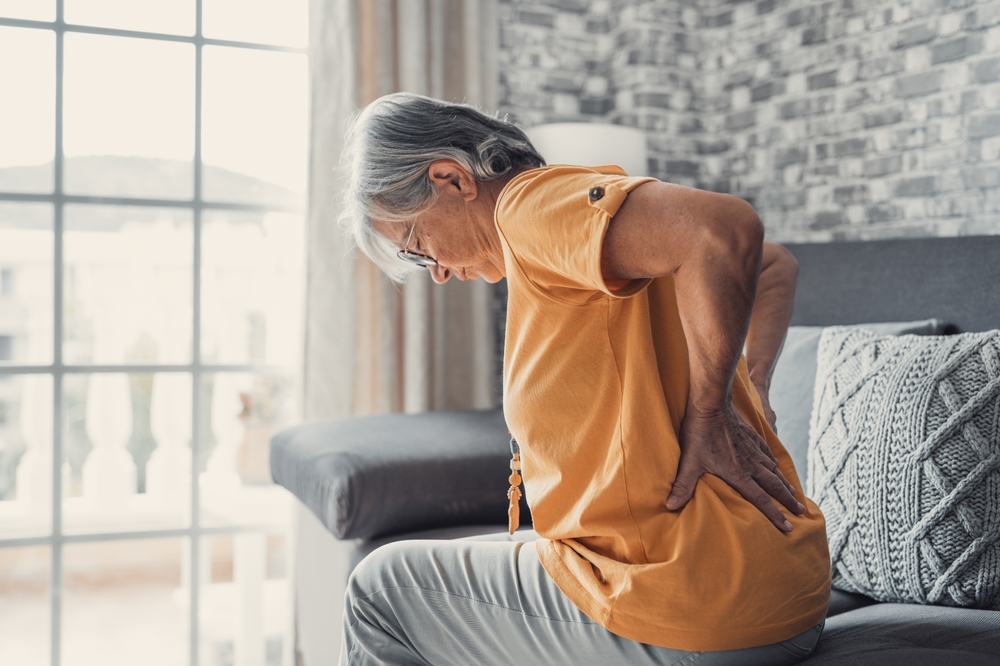You might not realize how essential joint flexibility is for your overall mobility and quality of life. By understanding various therapy techniques—ranging from traditional physical therapy to innovative modalities—you can greatly improve your joint function. Each method has its own set of benefits, and finding the right combination tailored to your needs can make a noticeable difference. As we explore these options, you'll discover strategies that not only enhance flexibility but also promote long-term joint health. What if you could access a level of movement you thought was lost?
Importance of Joint Flexibility
Joint flexibility is fundamental for maintaining overall mobility and preventing injuries. When your joints can move freely through their full range of motion, you're more capable of performing daily activities with ease. This flexibility contributes to better posture, balance, and coordination, which are essential for avoiding falls and other accidents.
You mightn't realize it, but tight or stiff joints can limit how well you move, making even simple tasks feel challenging. Think about bending down to tie your shoes or reaching for something on a high shelf; if your joints aren't flexible, these movements can become painful or even impossible. By prioritizing joint flexibility, you're investing in your body's ability to function effectively.
Moreover, improved flexibility can enhance athletic performance. Whether you're running, swimming, or engaging in sports, having flexible joints allows for more efficient movement patterns, which can lead to better results. You'll notice that you can push your limits further without the fear of injury holding you back.
Incorporating flexibility training into your routine can also promote recovery after workouts. It helps to alleviate muscle tension and soreness, speeding up your return to peak performance. This balance between strength and flexibility is crucial for maintaining a healthy lifestyle.
Common Causes of Joint Stiffness
Many factors can contribute to joint stiffness, making it a common issue for people of all ages. One of the primary causes is aging. As you get older, the cartilage that cushions your joints can wear down, leading to stiffness and discomfort.
Additionally, if you lead a sedentary lifestyle, you might find that your joints feel stiffer, as inactivity can cause the muscles and connective tissues around your joints to tighten.
Injuries also play a significant role in joint stiffness. If you've experienced a sprain or strain, the inflammation that follows can lead to temporary stiffness in the affected area. Over time, this can develop into chronic stiffness if not properly addressed.
Conditions like arthritis are another common culprit. Both osteoarthritis and rheumatoid arthritis can cause inflammation and pain, resulting in limited mobility and stiffness.
Improper posture and repetitive movements can further contribute to joint stiffness. If you sit for long periods or perform the same motion repeatedly, certain joints may become tight or stiff, affecting your overall range of motion.
Finally, dehydration can impact joint lubrication, making them feel stiff and uncomfortable.
Traditional Physical Therapy Techniques
Traditional physical therapy techniques play an essential role in improving joint flexibility and reducing stiffness. These methods focus on restoring movement and promoting healing through targeted interventions. When you visit a physical therapist, you'll likely experience a combination of manual therapy, modalities, and therapeutic exercises tailored to your specific needs.
One of the key techniques is manual therapy, where the therapist uses their hands to manipulate your joints and soft tissues. This approach helps increase blood flow, reduces pain, and enhances range of motion. You'll find that skilled hands-on techniques can effectively break down adhesions and improve your joint function.
Modalities such as heat, cold, ultrasound, and electrical stimulation are also commonly used. Heat can help relax tight muscles and improve circulation, while cold therapy reduces inflammation and numbs pain. Ultrasound waves penetrate deep into tissues to promote healing, and electrical stimulation can activate muscles, enhancing their strength and flexibility.
In addition to these techniques, your therapist will likely guide you through specific exercises designed to improve joint stability and flexibility. These exercises focus on strengthening the muscles around your joints, which can support better mobility and function.
Stretching Exercises for Flexibility
Incorporating stretching exercises into your routine can greatly enhance flexibility and complement the benefits gained from manual therapy and modalities. Stretching helps lengthen muscles, improve range of motion, and reduce stiffness, making it an essential component of any flexibility program.
To get started, focus on both dynamic and static stretching. Dynamic stretches, like leg swings or arm circles, are best done as part of your warm-up. They prepare your muscles for activity and help increase blood flow. On the other hand, static stretches, such as touching your toes or holding a quadriceps stretch, are ideal for cooling down post-exercise. Aim to hold each static stretch for at least 15 to 30 seconds, breathing deeply to help your muscles relax.
It's important to target all major muscle groups, including your hamstrings, quadriceps, calves, hip flexors, and shoulders. You can create a balanced stretching routine by incorporating stretches for each area. Remember to listen to your body; you should feel a gentle pull but never pain.
Consistency is key. Aim to stretch at least three times a week, and you'll likely notice improvements in your flexibility over time. You can even incorporate stretching into your daily routine, whether it's in the morning to wake up your muscles or before bed to unwind.
Benefits of Yoga for Joint Health
Practicing yoga offers numerous benefits for joint health, making it an excellent addition to your flexibility routine. By incorporating yoga into your weekly schedule, you can enhance your overall joint mobility and reduce discomfort. The gentle and mindful movement in yoga promotes better circulation, which is crucial for healthy joints.
Here are three key benefits that you'll experience:
- Increased Range of Motion: Yoga poses encourage you to stretch and strengthen your muscles, which helps to increase your joints' range of motion. You'll find that everyday activities become easier and more enjoyable.
- Reduced Pain and Stiffness: Regular yoga practice can alleviate joint pain and stiffness, especially in areas like your knees, hips, and lower back. You'll notice a significant reduction in discomfort, allowing you to engage in activities you love without hesitation.
- Improved Balance and Stability: Yoga enhances your balance and coordination, which is essential for joint health. As you develop stronger core muscles, you'll feel more stable and secure in your movements, reducing the risk of injuries.
Incorporating yoga into your routine not only nurtures your joints but also promotes mental well-being. You'll find a sense of calm and focus as you connect your breath with movement.
Incorporating Pilates in Your Routine
Incorporating Pilates into your routine can considerably enhance your joint flexibility and overall strength.
You'll discover key exercises that target specific areas, improving both mobility and stability.
Benefits of Pilates Practice
Pilates can greatly enhance your joint flexibility and overall strength when added to your routine. This form of exercise focuses on controlled movements, emphasizing core stability and alignment, which can lead to significant improvements in your physical health.
Here are some benefits you can expect from incorporating Pilates into your life:
- Increased Flexibility: Regular practice can help lengthen muscles and improve your range of motion, making everyday activities easier and more enjoyable.
- Enhanced Strength: You'll build functional strength that supports your joints, reducing the risk of injuries and improving your performance in other exercises or sports.
- Mind-Body Connection: Pilates encourages focus and awareness in your movements, helping you develop better coordination and posture, which can boost your confidence in your body.
Key Pilates Exercises
To effectively enhance your joint flexibility and overall well-being, adding key Pilates exercises to your routine can make a significant difference.
These exercises focus on controlled movements that engage your core, improve stability, and promote flexibility.
Start with the Pelvic Curl. Lying on your back with your knees bent, lift your hips while articulating your spine off the mat. This movement stretches your back and opens your hips, providing a gentle flexion.
Next, try the Spine Stretch Forward. Sitting tall with your legs extended, inhale and reach your arms overhead. As you exhale, fold forward, aiming to touch your toes. This exercise enhances flexibility in your spine and hamstrings.
Incorporate the Saw for a dynamic twist. Sitting with your legs extended wider than your hips, reach one hand toward the opposite foot while twisting your torso. This promotes rotational flexibility in your spine and stretches your legs.
Lastly, practice the Cat-Cow Stretch. On all fours, alternate between arching and rounding your back. This helps improve spinal flexibility and releases tension in your neck and shoulders.
Innovative Therapies and Modalities
Exploring innovative therapies and modalities can greatly enhance joint flexibility and overall mobility.
These approaches not only help you improve your physical condition but also promote a stronger connection between your body and mind. With so many options available, you can find the right fit for your lifestyle and needs.
Here are three innovative therapies that can markedly boost your joint flexibility:
1. Aquatic Therapy: Working out in water reduces the impact on your joints while providing resistance. The buoyancy allows for easier movement, making it possible to stretch and strengthen without pain.
You'll feel free and light as you glide through the water.
2. Myofascial Release: This hands-on technique focuses on releasing tension in the fascia, the connective tissue surrounding your muscles and joints. By targeting specific areas of tightness, you can improve circulation and flexibility.
Imagine the relief as you feel your body loosen up and regain its natural range of motion.
3. Cryotherapy: Utilizing extreme cold can reduce inflammation and pain, allowing for improved mobility. Many people report feeling invigorated and energized after a session.
Picture stepping out of the cryo chamber, feeling lighter and more agile, ready to take on your day.
Incorporating these innovative therapies into your routine can lead to remarkable improvements in your joint flexibility and overall well-being.
Embrace the possibilities, and take the first step towards a more flexible and mobile you!
Tips for Maintaining Flexibility
To maintain your flexibility, incorporate daily stretching routines into your schedule.
Staying hydrated and eating a balanced diet also plays an essential role in joint health.
Finally, don't underestimate the benefits of consistent therapy sessions to keep your body in top shape.
Daily Stretching Routines
Incorporating daily stretching routines into your life can greatly enhance your flexibility and overall joint health. By committing to a few minutes each day, you'll notice significant improvements in how your body feels and moves.
Here are three essential tips to help you maintain your flexibility:
- Set a Consistent Schedule: Choose a specific time each day, whether it's morning, midday, or evening. Consistency helps build a habit, making it easier for you to stick with your routine.
- Target Key Muscle Groups: Focus on areas that often feel tight, like your hamstrings, hip flexors, and shoulders. When you address these muscle groups, you'll feel more relaxed and agile throughout your daily activities.
- Listen to Your Body: Stretching shouldn't hurt. Pay attention to how your body responds, and don't push yourself too hard. This awareness will help prevent injuries and keep you motivated.
Hydration and Nutrition
While stretching is essential for flexibility, don't underestimate the role of hydration and nutrition in supporting your joint health. Staying well-hydrated helps keep your joints lubricated, which can reduce friction and prevent discomfort during movement. Aim to drink plenty of water throughout the day, especially before and after exercise. If you're active, consider electrolyte-rich drinks to replenish lost minerals.
Nutrition also plays a significant role in maintaining flexibility. Incorporate foods rich in omega-3 fatty acids, like salmon and walnuts, to help reduce inflammation in your joints. Leafy greens, berries, and nuts provide antioxidants that can combat oxidative stress, promoting overall joint health.
Don't forget about vitamin D and calcium, which are essential for bone strength; include dairy products or fortified plant-based alternatives in your diet. Additionally, consuming enough protein supports muscle repair and growth, which can enhance your flexibility.
Focus on lean meats, legumes, and whole grains to meet your protein needs. By marrying proper hydration with a balanced diet, you'll not only improve your flexibility but also support your overall joint health, allowing you to move with greater ease and comfort.
Consistent Therapy Sessions
Regular therapy sessions are essential for maintaining flexibility and promoting joint health. When you commit to consistent therapy, you're not just investing time; you're investing in your well-being.
Here are three compelling reasons why you should prioritize regular sessions:
- Enhanced Range of Motion: With each session, you'll notice improvements in your flexibility. This enhanced range of motion can make daily activities easier and more enjoyable.
- Injury Prevention: Consistent therapy helps strengthen muscles and improves joint stability, reducing your risk of injuries. You'll feel more confident in your movements, whether you're exercising or simply going about your day.
- Long-term Benefits: Regular sessions contribute to sustained joint health. You're not just addressing immediate issues; you're setting yourself up for a healthier future.
Conclusion
Improving your joint flexibility through various therapy techniques can lead to better mobility and overall health. By combining traditional methods like manual therapy and stretching exercises with innovative approaches like aquatic therapy and myofascial release, you can effectively enhance your flexibility. Don't forget the benefits of yoga and Pilates, which can further support your journey. Stay consistent with your therapy sessions, and you'll likely see significant improvements in your joint health and well-being.



